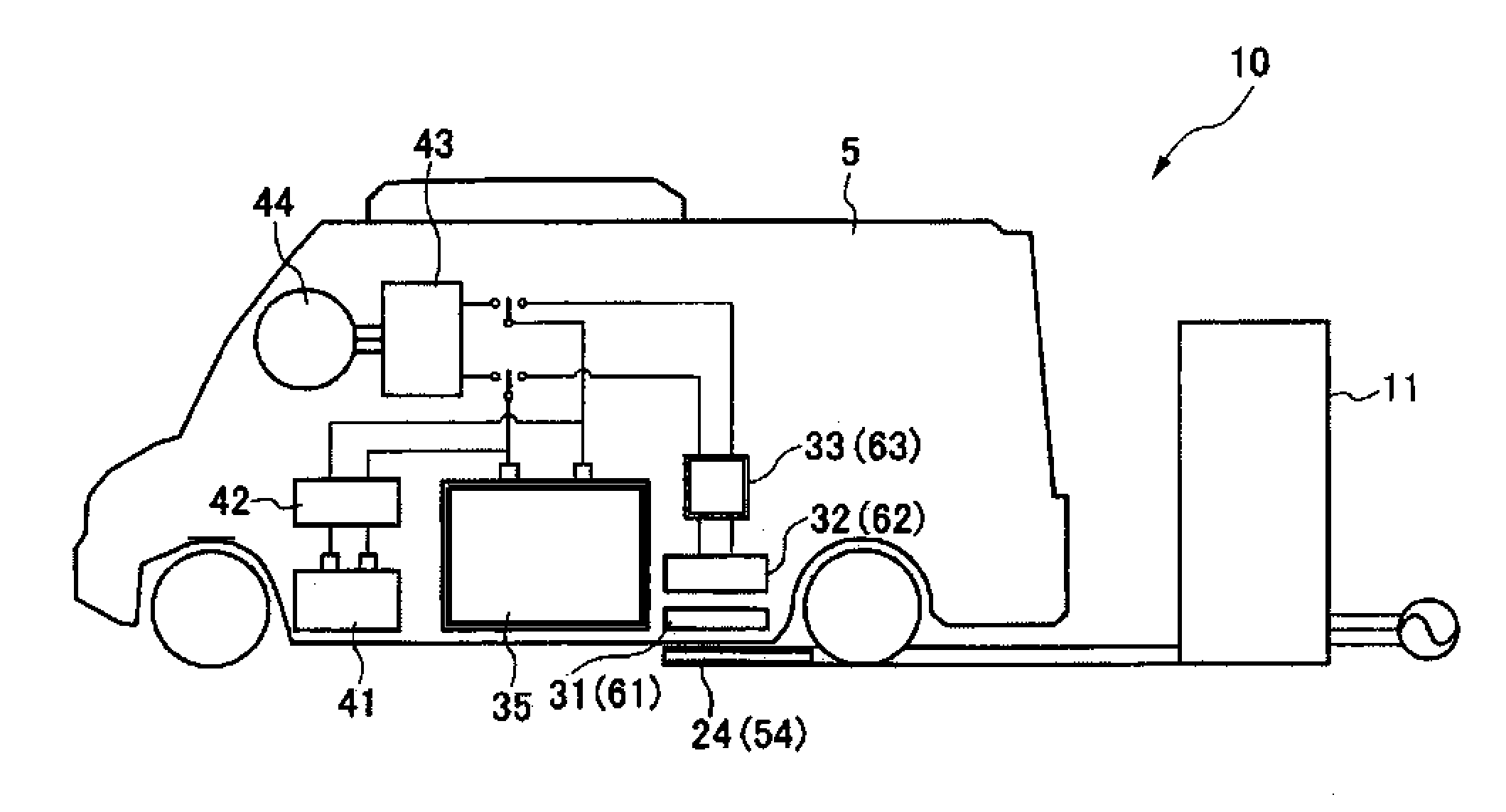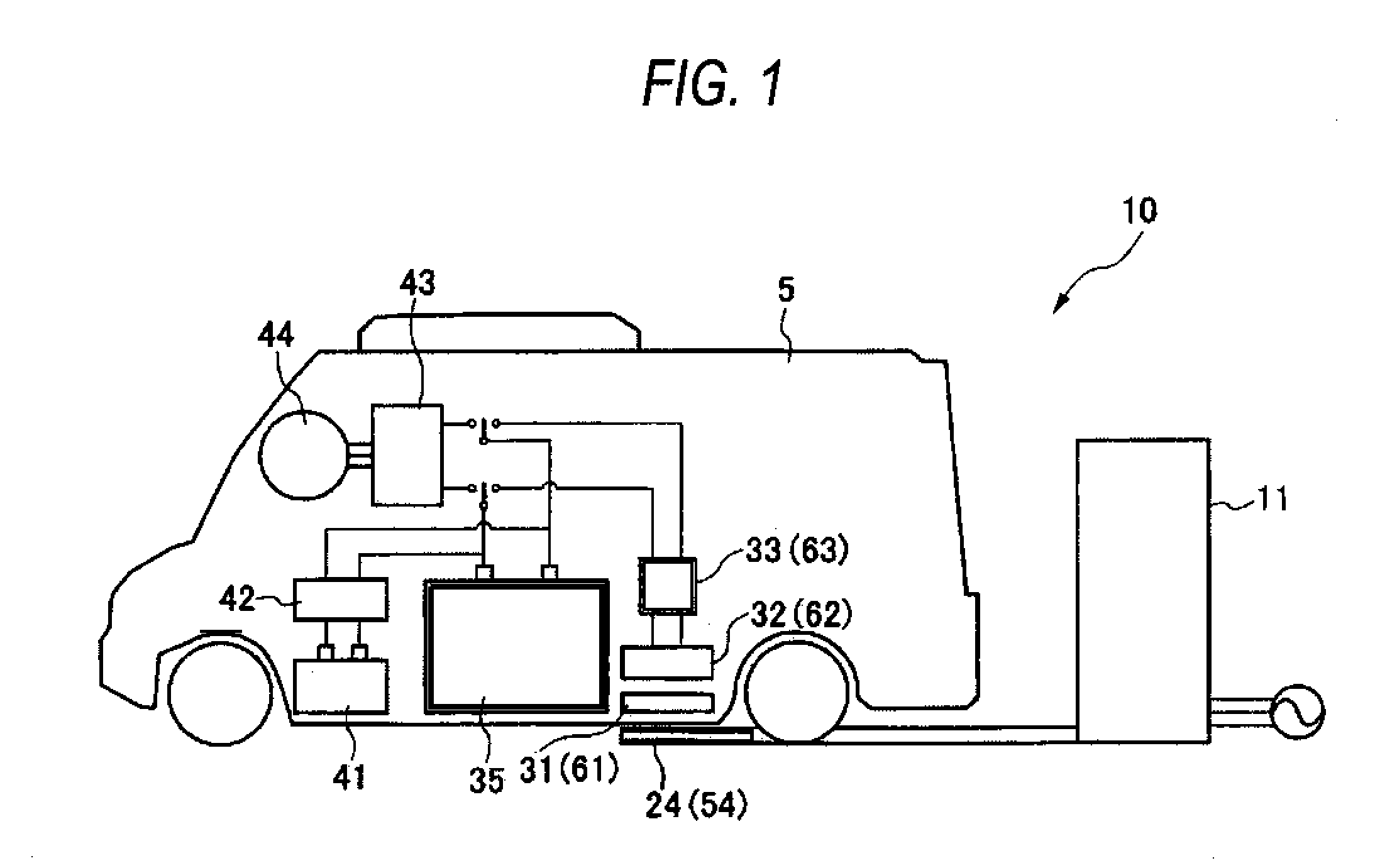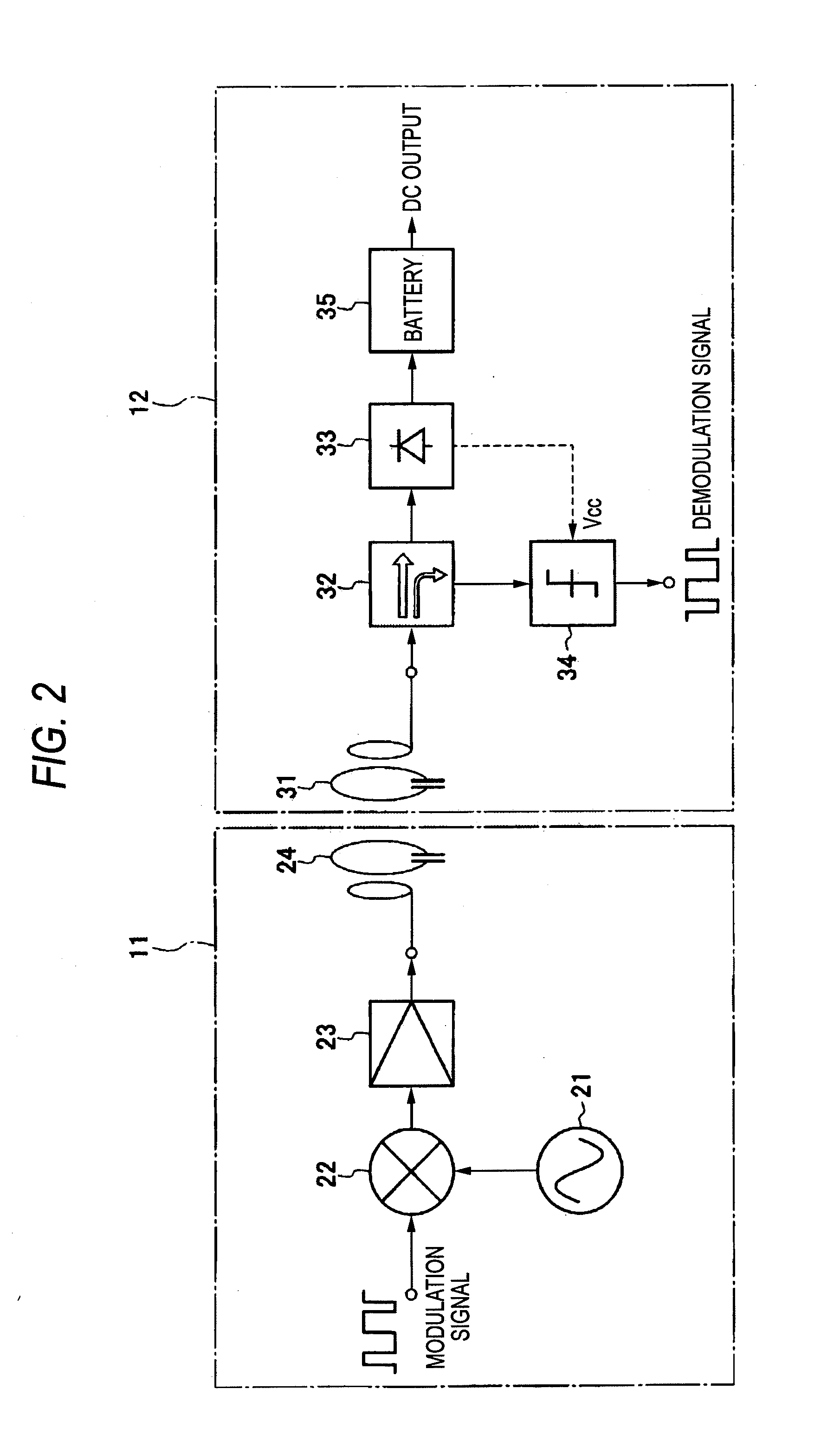Wireless charging system for vehicle
a charging system and vehicle technology, applied in the direction of charging stations, electric vehicle charging technology, transportation and packaging, etc., to achieve the effect of convenient charging operation, simplified system, and light weight of the vehicle body
- Summary
- Abstract
- Description
- Claims
- Application Information
AI Technical Summary
Benefits of technology
Problems solved by technology
Method used
Image
Examples
first embodiment
FIG. 2 is a block diagram showing the configuration of the wireless charging system for a vehicle according to the invention. As shown in this figure, the electric car 5 includes a charging apparatus 12. The charging apparatus 12 is supplied with electric power from the feeding apparatus 11 to thereby charge the battery 35.
The feeding apparatus 11 includes a carrier oscillator (electric power output section) 21 for outputting an AC power of a predetermined frequency, an ASK modulator (modulation section) 22 for superimposing a control signal on the AC power outputted from the carrier oscillator 21 according to a modulation method such as the ASK modulation, a power amplifier (electric power amplifying section) 23 for amplifying the AC power modulated by the ASK modulator, and a first resonance coil (communication terminal) 24 for outputting the AC power amplified by the power amplifier 23.
The carrier oscillator 21 outputs the AC power having the frequency in a range of 1 to 100 [MHz...
second embodiment
As shown in FIG. 3, the wireless charging system for a vehicle includes the feeding apparatus 13 and the charging apparatus 14.
The feeding apparatus 13 includes a carrier oscillator 51 for outputting an AC power, a hybrid distributor 55 for distributing the AC power outputted from the carrier oscillator 51 into two AC powers, an ASK modulator 52 for superimposing a control signal on one of the two AC powers distributed by the hybrid distributor 55 according to a modulation method such as the ASK modulation, a power amplifier 53 for amplifying the AC power modulated by the ASK modulator 52, and a first resonance coil 54 for outputting the AC power amplified by the power amplifier 53.
Further, the feeding apparatus is provided, between the power amplifier 53 and the first resonance coil 54, with a transmission / reception selection switch 56 for switching between the transmission and the reception. Furthermore, the feeding apparatus is provided with a power amplifier 57 for amplifying a...
third embodiment
FIG. 6 is a block diagram showing the configuration of the wireless charging system for a vehicle according to the As shown in this figure, a feeding apparatus 15 includes a carrier oscillator 71 for outputting a carrier signal for power transmission, an ASK modulator 72 for superimposing a control signal on the carrier signal outputted from the carrier oscillator 71 according to the modulation method such as the ASK modulation, a power amplifier 73 for amplifying the AC power thus modulated by the ASK modulator 72, and a first resonance coil 74 for outputting the AC power thus amplified by the power amplifier 73.
The carrier oscillator 71 outputs the AC power having the frequency in a range of 1 to 100 [MHz], for example, as an AC signal for power transmission.
The ASK modulator 72 modulates the AC power as the carrier signal according to the ASK (Amplitude Shift Keying) method. Although this embodiment is explained as to an example where the ASK method is employed as the modulation...
PUM
 Login to View More
Login to View More Abstract
Description
Claims
Application Information
 Login to View More
Login to View More - Generate Ideas
- Intellectual Property
- Life Sciences
- Materials
- Tech Scout
- Unparalleled Data Quality
- Higher Quality Content
- 60% Fewer Hallucinations
Browse by: Latest US Patents, China's latest patents, Technical Efficacy Thesaurus, Application Domain, Technology Topic, Popular Technical Reports.
© 2025 PatSnap. All rights reserved.Legal|Privacy policy|Modern Slavery Act Transparency Statement|Sitemap|About US| Contact US: help@patsnap.com



